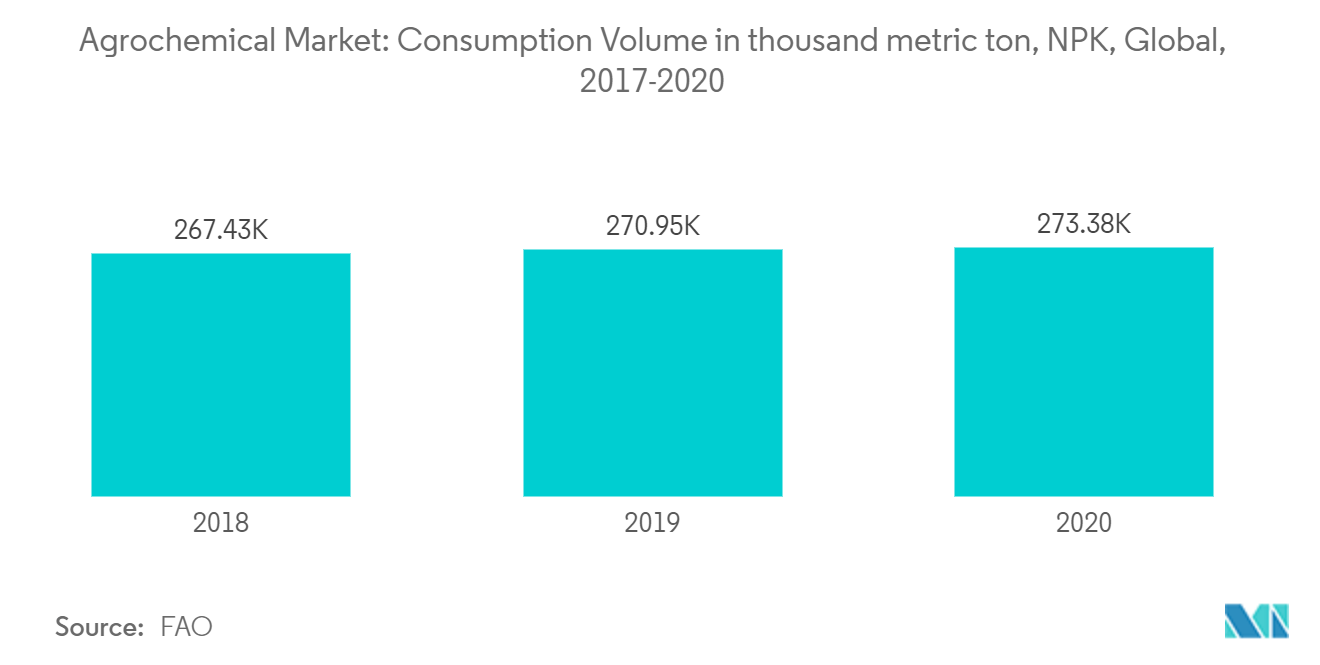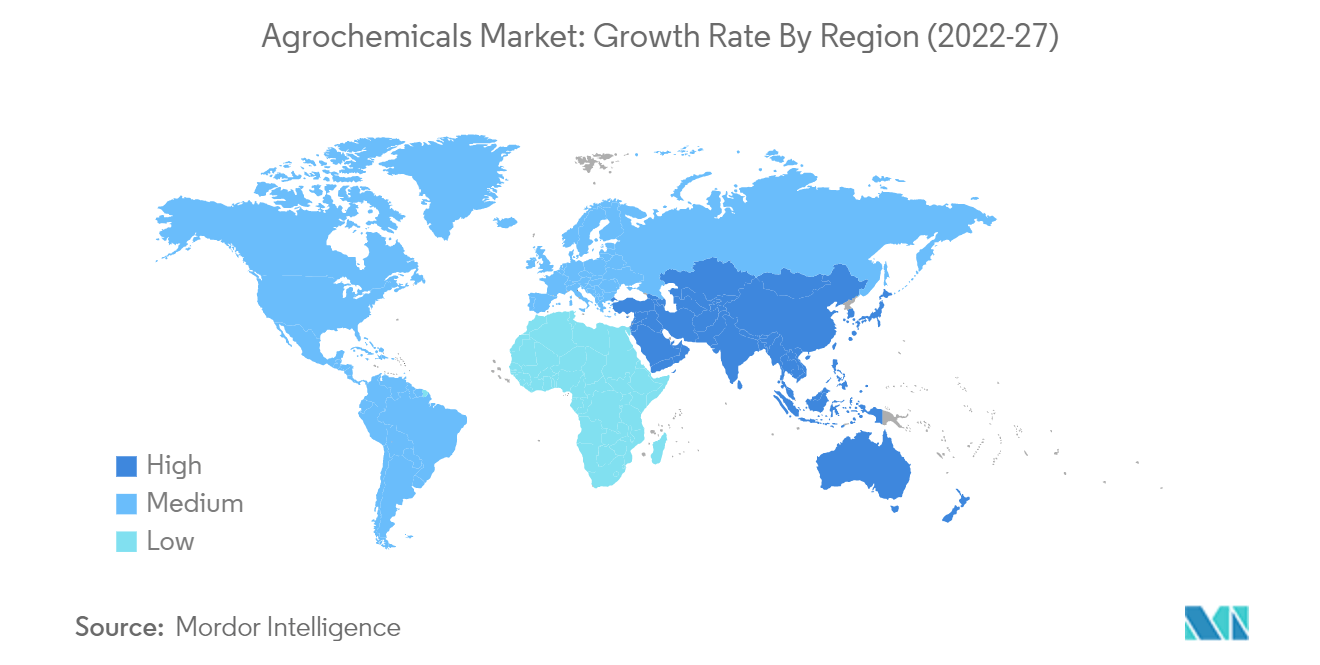Market Trends of Agrochemicals Industry
Increasing Population and Consequent Rise in Food Demand
- According to FAO, the world population is expected to reach 9 billion by 2050. The increasing population creates a huge demand for food products to feed the population, which is turning into a major challenge with the decreasing farmland. For instance, in 2021, approximately 17.23 million hectares of land in the United Kingdom was classified as the utilized agricultural area, which has decreased from 17.27 million hectares in 2020. The shrinking area under agriculture is expected to demand more produce from the available land.
- Agrochemicals are highly important in obtaining high yields as these are necessary to prevent pests and diseases in the field. As per a report by FAO, nearly 40% of the world's agricultural crops are lost to pests and diseases each year. To tackle these problems and to increase production, the use of crop protection chemicals is anticipated to increase. According to FAO, in 2020, herbicide consumption worldwide nearly reached 1.4 million metric tons, whereas consumption of fungicides and bactericides stood at around 606 and 471 thousand metric tons, respectively.
- Agrochemicals also play a vital role in crop growth, showing improved performance and noticeable results. Supplying adequate plant nutrients is essential for healthy growth as well as the production capacity of plants. The nutrient demand varies with crops and soil. These nutrient demands can be effectively fulfilled through the use of chemicals. For instance, urea provides 46% nitrogen to the soil, whereas organic fertilizers like neem cake could provide only 2-5% of nitrogen, which is an essential element for plant growth and development. Thus, the growing population is the major factor for the need to increase the use of agrochemicals across the world.

Asia-Pacific Dominates the Market
- China accounts for the largest share among other countries in the agrochemicals market globally. Chinese consumption of organic N, P, and K fertilizers is reducing due to decreasing cropland area. For instance, according to the China Green Food Development Center, in 2021, approximately 9.84 million hectares of farmland had been certified as organic farmland in China, which has decreased from 13.9 million hectares in 2019. The cropland area under fruits and vegetables is increasing, while the area under cereals is decreasing.
- Similarly, the large production of cereal crops, like rice and wheat, in India is the major factor supporting the growth of the market. The use of pesticides is rising steadily in India. Revenues of a few leading pesticides and agrochemical companies as of June 2022 are a clear indication of the growth of the agrochemical market in the country as well as the region.
- UPL was the leading pesticides and agrochemical company in India based on net sales worth over INR 164 billion (USD 1.98 billion) as of June 2022. The company was followed by BASF India, which ranked in second place with net sales of roughly INR 130 billion (USD 1.57 billion). Data reveals that only eight states account for more than 70.0% of the total pesticide consumption in India. With a growing emphasis on the environment and sustainability, various governments in the region are enforcing clean production and environment-friendly agriculture policies, which may lead to a decline in synthetic pesticide usage in the country. However, the government has encouraged the use of microbial pesticides, which is expected to grow rapidly in the coming years.

